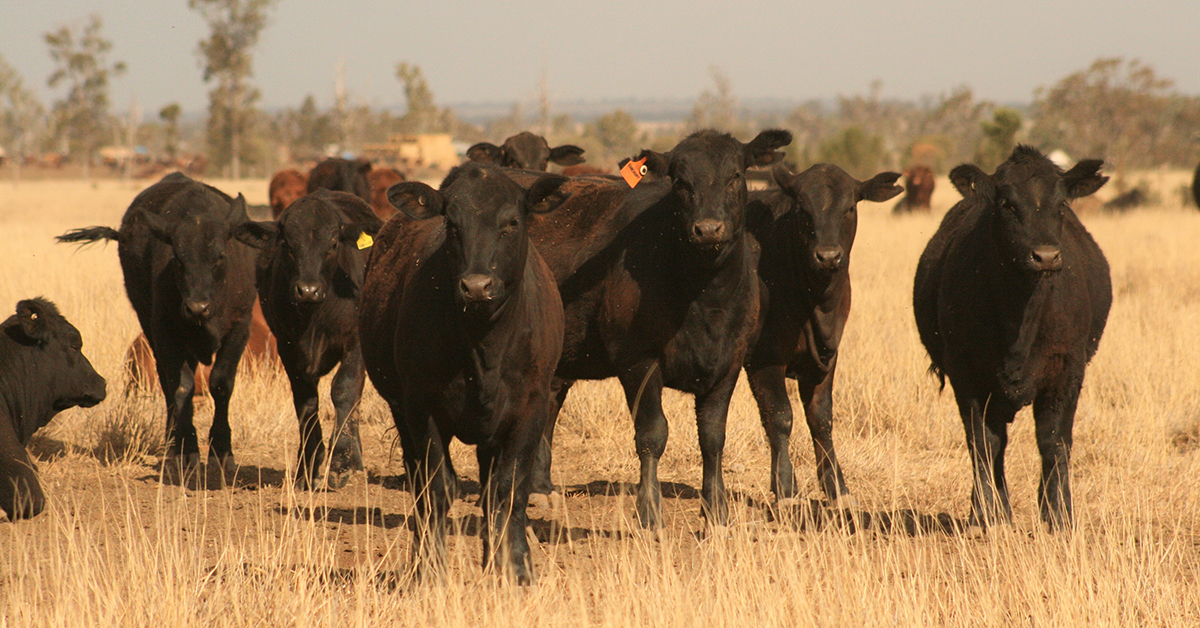Angus for Profit in Queensland’s Central West


Operations in the Central West region of Queensland, arguably one of the powerhouses of beef production in the country, stand to gain the greatest increase in profit from incorporating Angus genetics. These increases, predominantly arising from increased productivity from genetic gain and hybrid vigor in cross breeding operations, present the opportunity to increase Earnings Before Interest & Tax (EBIT) by up to $88 per Adult Equivalent (AE) over a ten-year horizon.
These are the findings of the recently released report ‘Profiting from Angus Genetics in Commercial Herds’ by Bush Agribusiness.
The modelling undertaken by Bush Agribusiness simulated the use of Angus genetics in businesses targeting weaner, feeder and slaughter markets, as well as growing/trading operations in the Central West, Queensland’s Southern Inland and the NSW Tablelands. Through the use of extensive regional benchmarking data, the model examined the change in profit from average business performance over a ten-year period and quantified the impact of genetic gain, hybrid vigor and market premiums on profitability in each region.
Operations in the Central West producing feeder and slaughter animals, as well as those operating a trading enterprise, in both straight and cross breeding (Angus x Brahman) scenarios were shown to have the greatest potential increase in profit. This reflects the greater profit made as a result of the genetic gains for growth being realized over time (figure one).

The model suggests that pure bred Angus operations breeding for the feeder and slaughter market could return an additional profit, above that of area average, of $113,000 and $154,000, respectively. Meanwhile, those running cross breeding programs and benefitting from hybrid vigor gained an increase in returns of $173,000 and $181,000 for feeders and slaughter, respectively.
Increased production achieved through genetic gain accounted for 88% of the lift in profit in pure-bred scenarios while cross bred feeder and slaughter operations derived 58% and 75% of increased profit from genetic gain, respectively.
Breeding for feeder and slaughter markets also benefitted most from market premiums, particularly in straight bred scenarios, and were amplified by the greater opportunity for growth over the longer period of time. Approximately $13,000 to $17,000 additional profit was attributable to market premiums in these scenarios (approximately 12%). Market premiums had little impact on crossbreeding programs, contributing around $1,000 over the ten-year period, or 1%.
In terms of profit per adult equivalent (AE), these modest lifts in profit over a ten-year horizon have the potential to lift businesses that utilise Angus genetics in either straight or cross bred scenarios into the region’s top performers. The average EBIT/AE in the Central West is $28.51, while those businesses in the top 25% most profitable for the region return an EBIT/AE of $69.08 (table one). In all scenarios except the weaner production scenario, the $40.57 EBIT/AE difference separating the average and top 25% performers was exceeded by the additional profit gained through the use of Angus genetics.

Considering the cost the business already incurs by running each adult equivalent, the model demonstrates the value of selecting the “right” adult equivalent that will drive genetic gain, production, and ultimately, profit.
Selecting and managing the right bull become paramount, as profit gains made through production are sensitive to changes in cost. Potential increase in bull cost, arising from more expensive bulls, higher cost of management or higher turn over rate, need to be a consideration that is approached with care when transitioning breeds.
With the right management, Angus bulls have been successfully used in a huge array of environments, particularly in Northern Australia and provide the opportunity for operations to access genetics that can lift profitability through the combination of production improvements through genetic gain, hybrid vigour and market premiums.
For more information on ‘Profiting from Angus Genetics in Commercial Herds’ please access the report on that Angus Australia website. Information regarding the best practise management and considerations of managing Angus bulls in Northern Australia can also be found via the Northern Hub of the Angus Australia website.